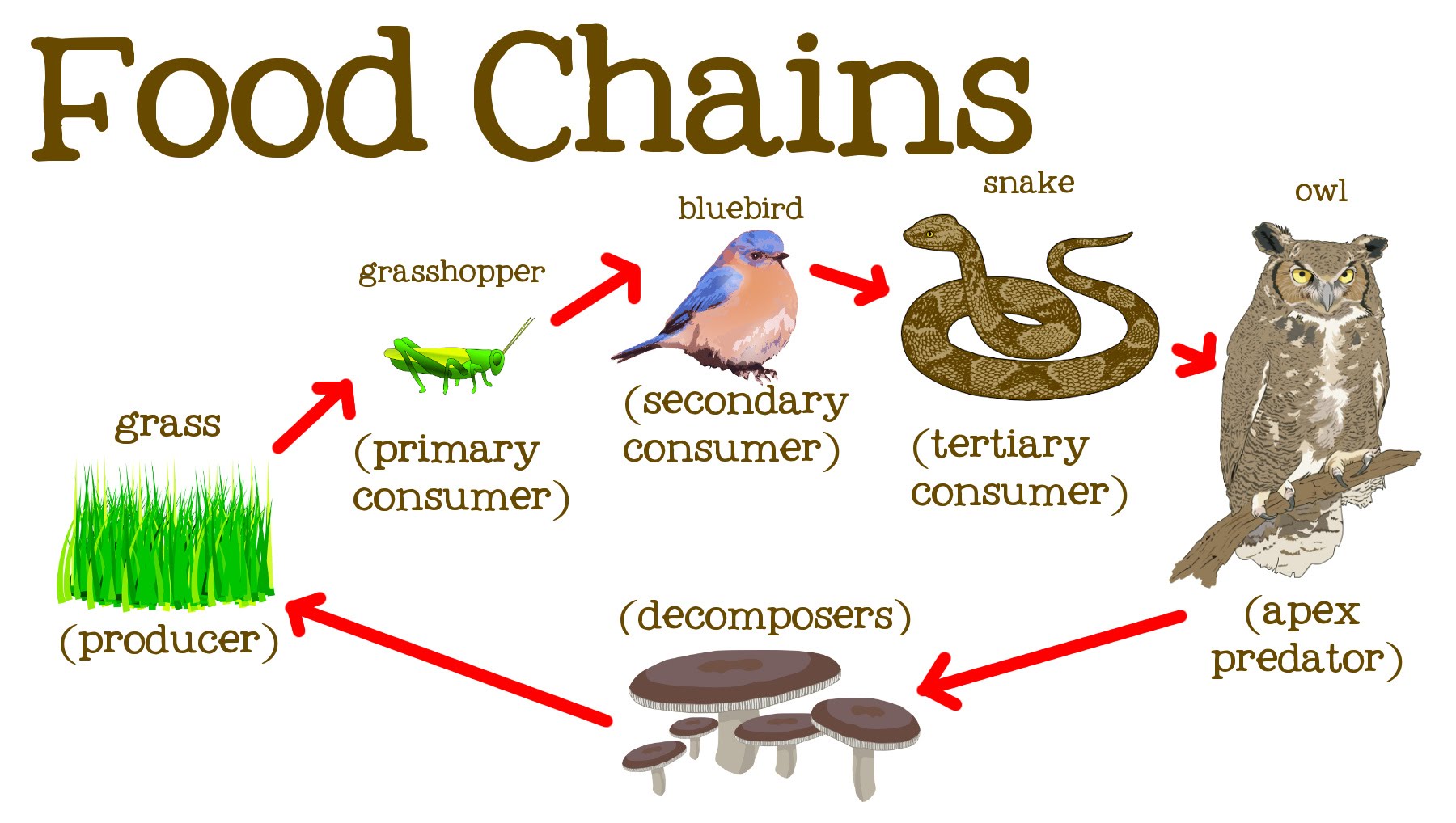What is the difference between a producer, secondary consumer, primary consumer, and tertiary consumer?
1 Answer
May 11, 2018
A producer produces their own organic molecules while the consumers get organic molecules by consuming others.
Explanation:
The food chain is a sequence of organisms that basically show who gets the organic nutrients by consuming other organisms.
Producers
- also known as autotrophs or self-feeders
- they produce their own organic molecules like carbon, essentially feeding themselves.
- there are two types of autotrophs: photoautotrophs and chemoautotrophs
- a photoautotroph uses sunlight to create their organic molecules (ex: plants)
- a chemoautotroph uses chemicals to make their organic molecules (ex: hydrogen sulfide-oxidizing bacteria)
Heterotrophs
- also known as other-feeders or consumers
- they can't make their own organic molecules so they have to get it by eating others like producers
- there are many types of consumers: primary, secondary, tertiary, and quaternary
- Primary consumers: usually are herbivores and eats producers
- Secondary consumers: usually are carnivores and eats primary consumers
- Tertiary consumers: usually are carnivores and eats secondary consumers
- Quaternary consumers: are at the top of the food chain and eats tertiary consumers. They are also known as apex predators
Source/s:
Food chains & food webs. (n.d.) Retrieved from https://www.khanacademy.org/science/ap-biology/ap-ecology/modal/a/food-chains-food-webs
Image/s:


